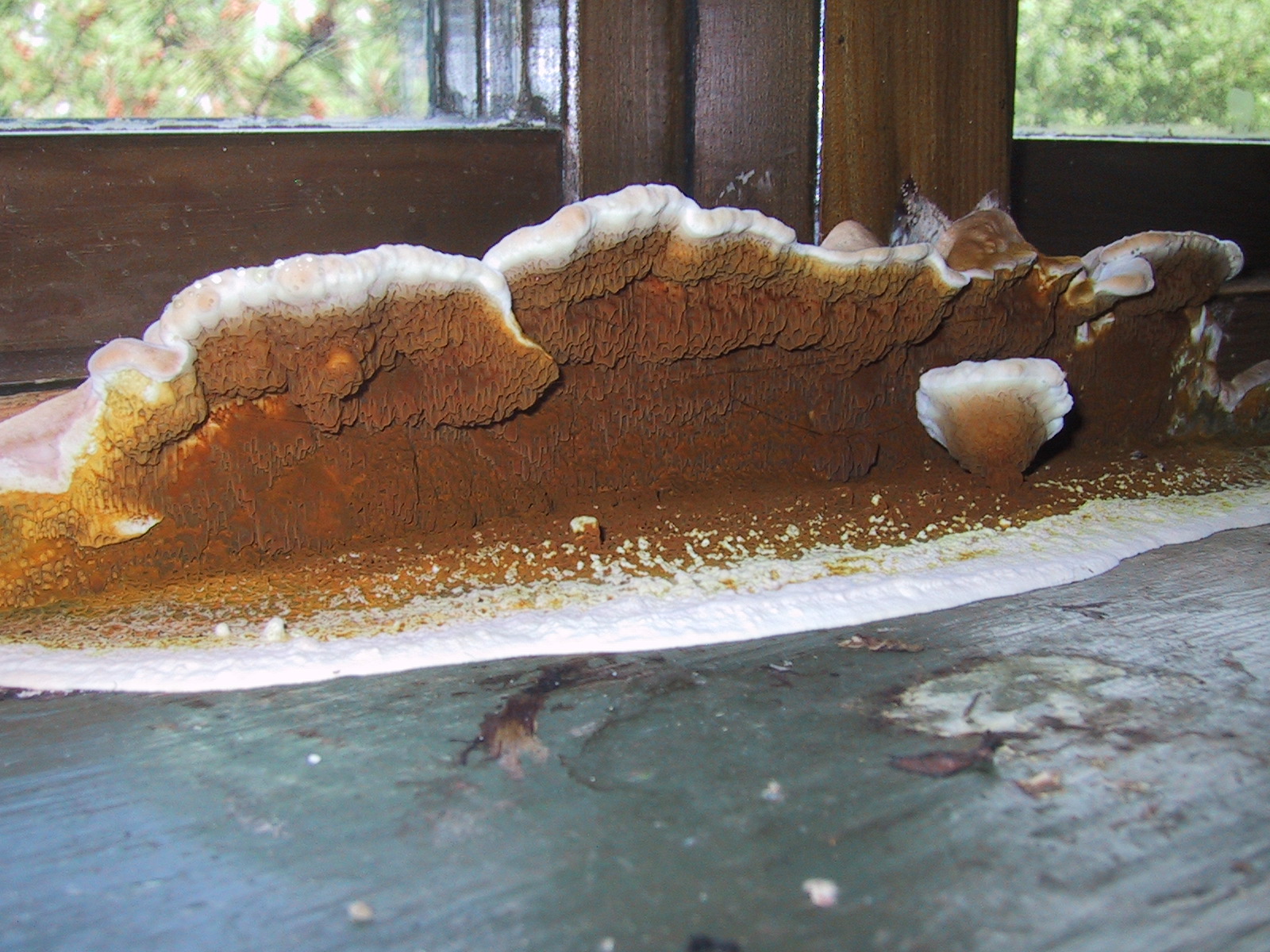
Occurrence
True house fungus can occur anywhere in the building in connection with brickwork and woodwork, concrete, plasters, insulation, etc. Attacks by real house fungus typically occur in connection with leaks in roof coverings, worn-out gutters and downspouts, leaky wells and infiltration of ground moisture.
Once the house fungus has started, it can use its special stringy mycelium to pick up and transport water over greater distances and thereby moisten new parts of the construction. Thereby it can continue its growth and over time spread from basement to twig. True house fungus can spread far into the hidden structural parts of the building, e.g. behind panels, in the cavity wall, in the joints in the brickwork, behind the built-in joists, etc., before the attack is discovered. True house fungus forms oxalic acid to break down the hard hemicellulose coat of the wood cells so that it has access to the cellulose fibres. To regulate the acid balance, the fungus needs lime from joints, bricks, plaster or mineral wool, even polyurethane foam.
The Real House Fungus prefers stagnant moist air, a wood moisture percentage of between 20-30 % and a temperature below approx. 25°C. Growth stops when the temperature rises above 25°C, and the fungus dies when the temperature passes 37°C. On the other hand, it can grow even at freezing point.
Real house fungus is, under optimal conditions, a very aggressive wood-decomposing fungus. Where other wood-decomposing fungi can take many years to break down the wood, in the case of an attack by true house fungus, the attacked wood is often completely destroyed within a few months, even with heavily dimensioned wood.

Fruiting body
Fruiting bodies from Ægte Housefungus are frequently seen in attacks on buildings. When the fruiting bodies are seen, the attack is usually well advanced. Even if the attack is found in dark structures, the mycelium seeks light where the fruiting body is formed - for example at a basement window, on a step, a skirting board or around a fluorescent tube. The fruiting body is often shaped like a flat disc, orange or cocoa brown in the middle and with a thickened white border around it. In some cases, cone-sol formations are also seen. The brownish color is due to the many millions of spores that the house fungus produces to reproduce. Therefore, brown to orange-brown, dusty coatings are often seen around skirting boards, panels etc. deposited by a fruiting body somewhere in the construction.

Mycelium
In completely fresh infestations, strong development of a cottony, snow-white mycelium is seen, often with lemon-yellow water droplets. When the mycelium gets a little older, the color changes to grayish. Gradually thicker strands form. In well-developed house fungus attacks, meter-long, pencil-like strings are often seen. Characteristic of the string mycelium is that when it dries out it becomes stiff and hard and can be broken with a bang. String mycelia from other wood-decomposing fungi do not have this property.
Sometimes, instead of stringy mycelium, a grayish, parchment-like mycelium is seen, which can be pulled from the wood or masonry in flakes. This surface mycelium is typically seen on the underside of floorboards, panel backs, etc.

Decomposition
During decomposition, the wood loses most of its weight and it cracks across the fiber direction (brown rot, see page 5) with 5-10 cm large crack blocks as a result, often mixed with grayish mycelium and strings. Both splinter and core break down.

Fighting with ProtoxSvamp
Living mycelium from Real House Fungus can transport water to a dry area in the building and there moisten the wood and then attack and break it down.
It is therefore very important to find the total extent of damage before you can start the actual fight against the house fungus attack. If an area with an attack of real house fungus in the building is overlooked, the entire remediation may end up being wasted. It is therefore necessary to carry out a systematic investigation of the extent of the attack and draw up a treatment plan based on that. To ensure that all occurrences of mycelium are combated, a safety zone of 1 meter is included. It is recommended to contact a consulting firm specializing in determining the scope of Real House Fungus.


